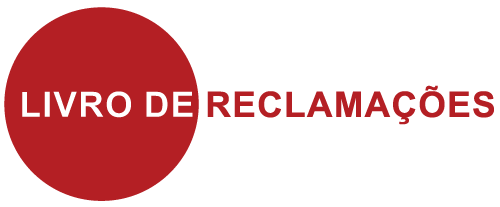'Pearl of the Atlantic'.
Best island destination in Europe. An island blessed by the sun but in love with the sea.
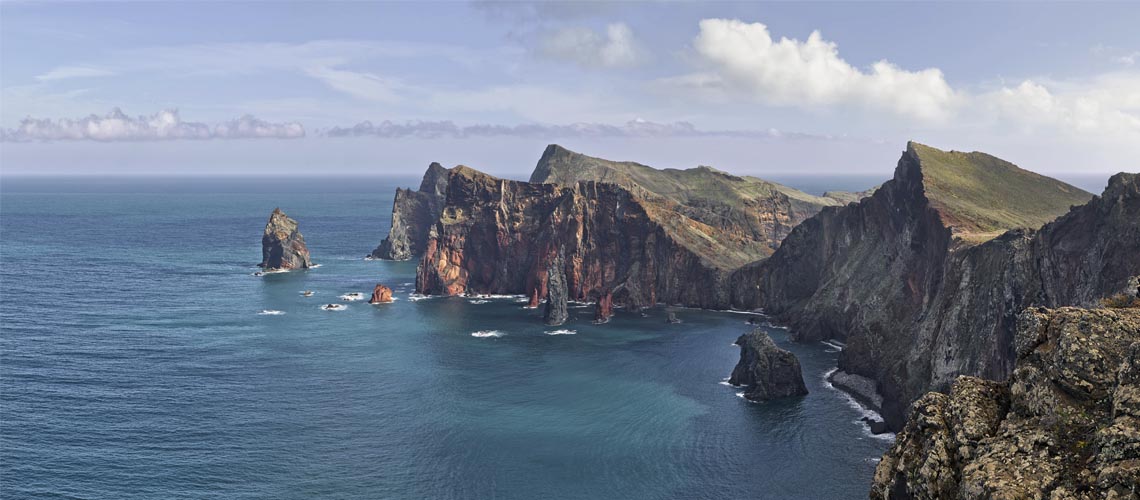
Situated in the Atlantic Ocean just 500 km from the African continent and a 1000 km from mainland Portugal (1h30m to Lisbon by plane), is the archipelago of Madeira. This, in addition to the island of the same name, consists of the island of Porto Santo (Golden Island) 90 km NE of Funchal); the Desert Islands (only 3 uninhabitable islets - Deserta Grande, Buguio and Ilhéu Chão, 20 km SE of Funchal) and the Selvagens Islands, which are a nature reserve, 280 km from Funchal.
Madeira Island, often called the Pearl of the Atlantic, Eden or Paradise, all of it is a Natural Park with its 728 Km2 (57 Km E-W long and 22 km wide NS ) having more than 700 species of plants, 100 of them endemic (not seen in any other part of the world).
Its highest moutain is Pico Ruivo (1862 m). Administratively, this island covers 10 municipalities and 52 parishes with a total population of approximately 260,000.

Madeira Island is situated beteween the coordinates of the parallels 32º 38 'and 32º 52' north latitude, and the meridians 16º 39 'and 17º 16' west longitude
It offers various types of habitats, arranged in a very irregular and steep terrain and a quarter of its surface lies above 1,000 meters. The flat areas are scarce, except the Plateau Paul da Serra in the West with an area of ??about 24 km2. The highest point is the Pico Ruivo with 1862 meters of altitude.
The island's capital of this autonomous region is the city of Funchal. The municipality is bordered to the north by the Santana district, northeast of Machico, on the east by Santa Cruz and west of Câmara de Lobos, being bathed by the Atlantic Ocean to the south. The city matches its council name , and has 76.25 km ² and 98,583 inhabitants (2008), subdivided in 10 parishes.
Madeira Island is famous for its climate and excellent temperatures, where always seems to be spring, balmy sea water, and by lush vegetation, which nicknamed the island «Pearl of the Atlantic» or «Atlantic Garden», making the Island a tourist destination of choice throughout the year. It is common knowledge that the irregularity of the topography as a deep impact on the climate. In Madeira that is clearly visible because numerous microclimates coexist and are established as a function of altitude. In the ridges there may be very low temperatures and in Funchal (a few kms) a very pleasant temperature.
Most of the people living here think that Madeira has the best climate in the world. Never too hot (the maximum temperatures can reach 33 C, but only when the east wind blows for a few days of the year). The maximum average is usually arroubd 24 C during the summer months (July to October) and the minimum are around 17 C. In winter there is only a drop of about 4 C. The Laurissilva Forest, classified by UNESCO as World Heritage offers natural landscapes unique, being able to embark on the adventure of the «Levadas», ancient water ways that facilitated irrigation through rough terrain, and today are the best way to discover this natural heritage, and the core the island of Madeira. The island of Madeira is of volcanic origin, its climate is subtropical with extensive exotic flora, economically is largely devoted to tourism.

Most Atlantic islands and Madeira in particular are closely linked to the opening of the Atlantic, a process that began about 200 MY ago during the Triassic and that continues today. The group formed by Madeira, Desertas and Porto Santo came from a long-lasting hot «Pluma» originated from the Upper Mantle. This kind of vulcanismo is located inside the lithospheric plate, in this case the African plate. the hot spot is a fixed structure that episodically emits volcanic material, piercing the plate while it moves towards WE, resulting in the islands group archipelago.
The geomorphological evolution of Madeira and its current configuration is a result of the shape, structure and age of the volcanic edifice that gave rise to it, the nature of the materials and external erosive agents and its own geographical location.
The island is divided into two large massifs: Massive Volcanic Center, which occupies the central region of the island, it is a complex apparatus dominated from material of explosive origin (large blocks, lapilli «gravel», ashes, etc) disposed in chaotic form from several eruption centers, today hidden and unrecognizable. This massif is crossed by a dense network of veins in basic majority and some oriented trachytic in all directions. the little cohesion of pyroclastic material allowed deep erosion of tears constituting the morphology of the main streams. the Massif Volcanic Paul da Serra corresponds to a structural platform maintained by basaltic flows, sub-horizontal or slightly inclined to SW. Overall some levels are distinguished and also structural and inclined in the same direction, created by recent lava eruptions.
Around Madeira formed reef limestones subsequently eroded and are now known on the island, the outcrop of reef limestones of St. Vincent. Later sedimentary formations were fossilized by new outbreaks of eruptive materials.
The vast majority of the geological formations of Madeira are extrusive volcanic rocks (magma that cooled) such as effusive lava rocks very compact or porous resulting from basaltic disposed or episodes of explosive activity of the central issue. They have different inclinations and are more pronounced on the periphery of the island.
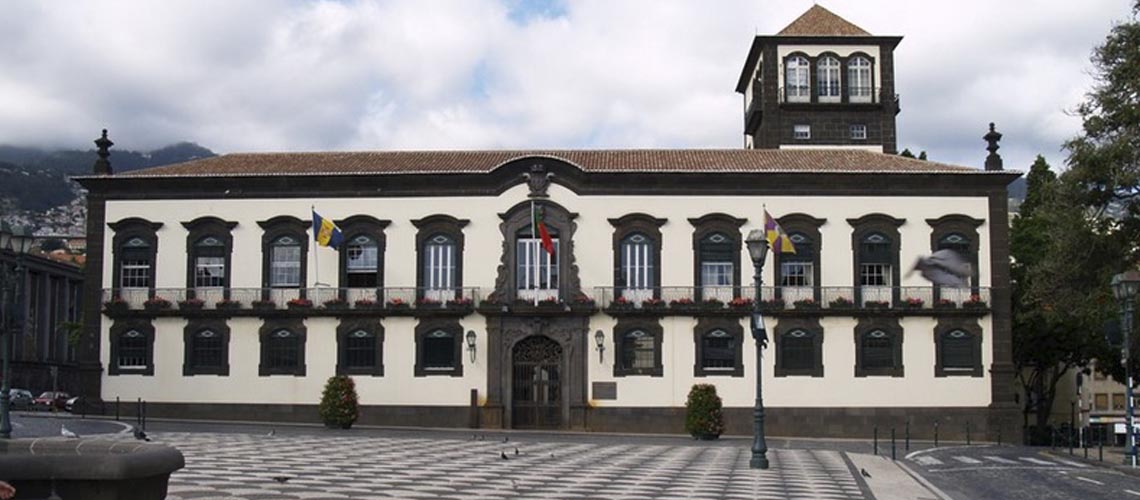
The islands of the archipelago of Madeira were already known before the arrival of the Portuguese to believe present references in certain works as well as the representation in some geographical maps. Among the works that refer to Madeira the ones from the Libro del Conocimiento passages (1348-1349), the work of a Spanish mendicant friar in which the islands are referred to by the name of Leiname, Diserta and Puerto Santo.
A year after the discovery of Porto Santo by João Gonçalves Zarco and Tristão Vaz Teixeira, the two browsers in conjunction with Perestrelo, arrive on the island of Madeira in 1419. Having noted the potential of the islands as well as the strategic importance of these colonization began around 1425 which have been an initiative of John I or do Infante D. Henrique. From 1440 the regime of the captaincies is established with the investiture of Tristan Vaz Teixeira as captain-donee of the Captaincy of Machico; six years later Perestrelo becomes Captain-donee of Porto Santo and in 1450 Zarco is invested Captain donee of the captaincy of Funchal.
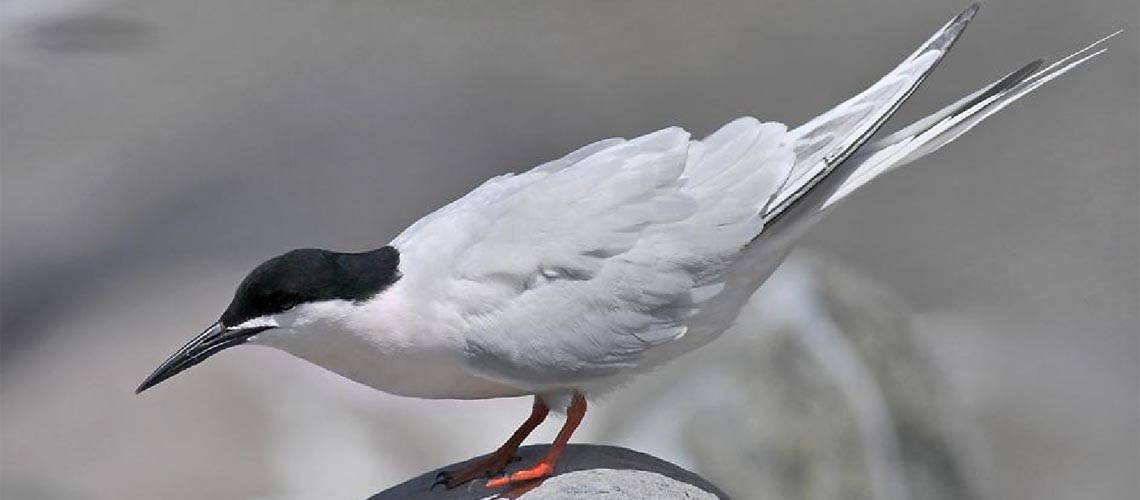
Much of the island is occupied by the Laurissilva Forest. This forest has many species of endemic flora and fauna of great interest to biologists and botanists. If you enjoy walking visit the forest along the existing tracks, the Levadas and Footpaths. Let yourself be enchanted along the route by the natural wonders of the island. The setting is unique with many waterfalls and tunnels dug into the rock.
Under the vegetation you can find endemic birds of Madeira, as the small Bis-Bis (Regulus ignicapillus madeirensis), Zino's Petrel (Pterodroma madeira), the chaffinch (Fringilla coelebs madeirensis) and Trocaz Pigeon (Columba trocaz). There are over 200 species of birds and nearly 700 species of insects in the region, representing about 75% of the known fauna of Madeira. It is estimated that about 20% of these insects are endemic of Madeira. Due to the geographic isolation of the islands, part of these species are presented as being unique worldwide.
One of the great features of the island's waters is the fact that it has great biodiversity at a very shallow depth. Enjoy and soak in the warm and turquoise waters of Madeira, know the marine fauna with your own eyes, certainly you will be fascinated by the amount of species of fish and shellfish.
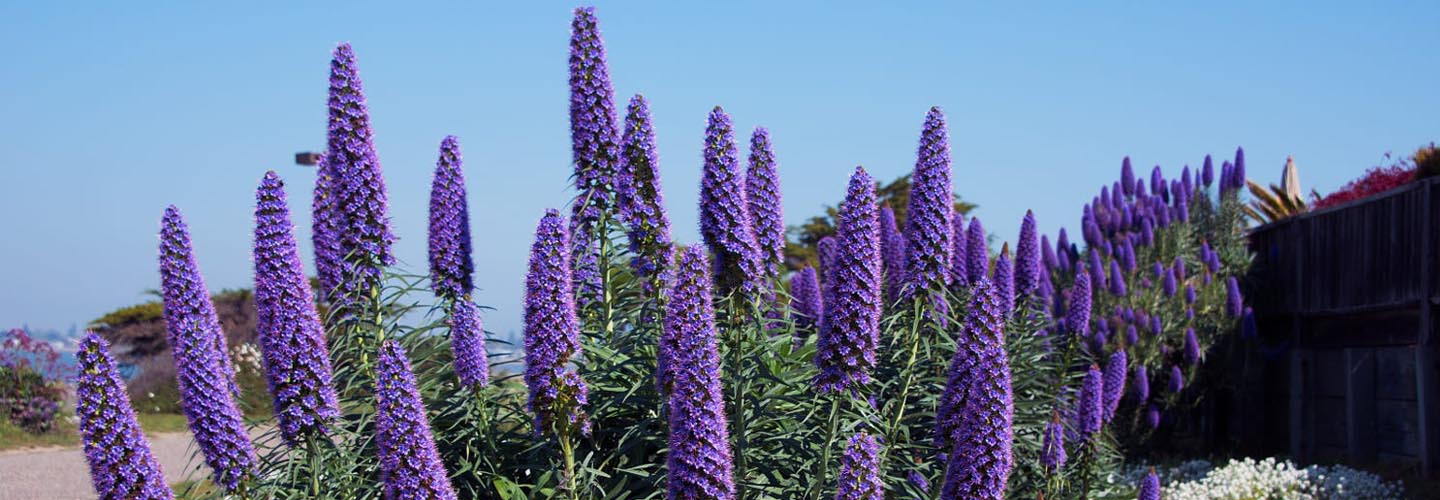
The island of Madeira brings together a set of unique features that make it different from any other place in the world. In fact, the flora of Madeira, because of its diversity, exuberance and singularity, is presented as one of the main attractions for nature lovers. In order to better study this diversity the island is subdivided into four vegetation climate floors.
In a walk up to 200 meters above sea level species such as Mathiola maderensis (wallflower Rock); Cynara cardunculus (Thistles); Musschia golden; Helichrysum melaleucum (Perpetual White); Helichrysum Devium (Perpetua de San Lorenzo); Andryala crithmifolia (Andríala); Argyranthemum pinnatifidum ssp. Succulentum (Mandon); Maytenus dryandri (maw of the Rock); Dracaena draco (Dragon Tree) stand out.
On the second phytoclimate floor that can reach 600 meters, we find a more humid and cool environment with abundant species characteristic of a transitional forest such as Apollonias barbujana (Barbusano); Myrica faya (Beech Islands; Salix canariensis (Salix canariensis), Ilex canariensis (Holly).
Between about 600 and 1300 meters above sea level, you can still find considerable Laurisilva in good natural state. This forest Laurissilva is often bathed in fog produced by moist air masses that provide the existence of unique species in the world, such as Laurus azorica (Loureiro); Persea indica (mahogany); Ocotea foetens (tilde); Clethra arboreal (puff pastry); Baccata Taxus (yew); Geranium palmatum (geraniums); Ranunculus cortusifolius (Ranunculus); Dactylorhyza foliosa (Orchic da Serra); among other plants that provide a real treat for all those who admire them.
It should be stressed that the forest Laurissilva gives shelter to a wide variety of endemic invertebrates mollusks and insects as well as rabbits and bats among others. Avifauna shuld be highlighted where we can contemplate the timid and spectacular flights of endemic Pigeon Trocaz - regarded as the flagship of the Laurel bird.
In the higher regions of the island, where you can breathe the pure, thin mountain air, low temperatures are present, predominantly tufts of undergrowth as the cores of various types of heather, mosses, lichens, Aeonium glandulosum (Ensaiões), Thymus caespititius (Rosemary da Serra); Armeria maderensis (Armeria); Viola paradoxa (Violet Yellow); Orchis scopulorum (quite rare Orchid).
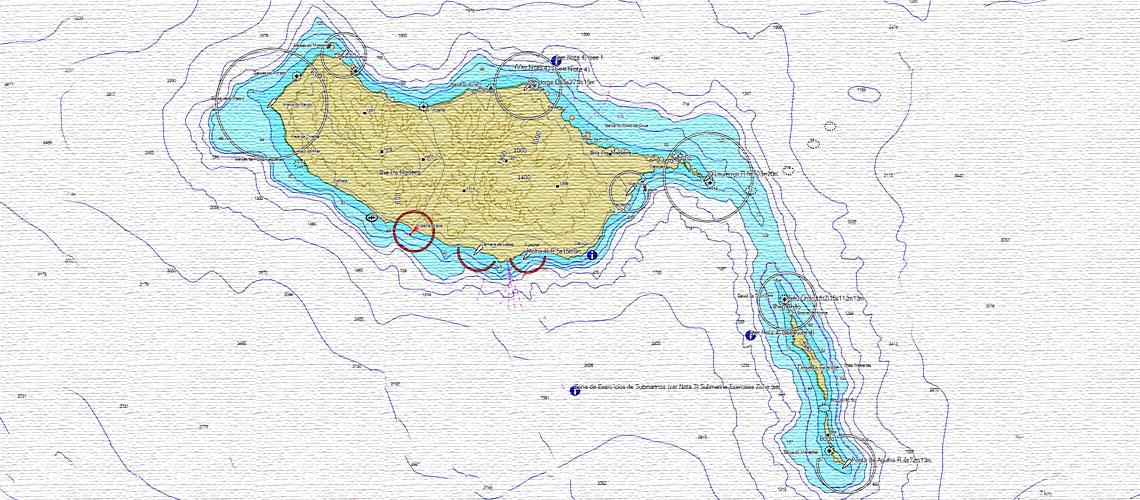
The weather in Madeira allows you to dive all year. Madeira offers easy dives with a great diversity of species, with the Garajau reserve being the most wanted place due to the great amount of life found there, especially the great Dusky Groupers that accompany us throughout the dive.
In front of Madeira are the Desertas Islands, where the only colony of monk seals in Portuguese territory lives. During some dives you may be lucky enough to encounter them.
The water temperature varies between 17ºC and 22ºC and the visibility between 10 and 25 meters.
It is recommended a 5mm suit in the high season, from June to October, and a 7mm suit in the low season, from November to May.
The dives are made in semirigid boats and the trips are relatively short, between 10 and 30 minutes. Normally, we do not return to the boarding dock between dives, the surface interval being carried on board.
To reach the Desertas Islands, the trip lasts about an hour.
The dive in the Atlantic Ocean is very dynamic and the conditions vary from day to day, it is recommended to take medicines for seasickness, especially for those most susceptible to the state of the sea.
The dive is in general easy and there may be some momentary current and only in some places.
Located in a strategic point of the island of Madeira we have in our facilities spas for men and women, with hot showers and towels. A shop where you can find the best brands of diving, classroom, technical zone with equipment to rent, a filling station and a pool with 3 meters depth.
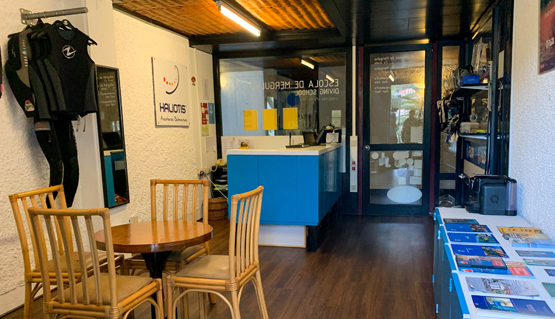
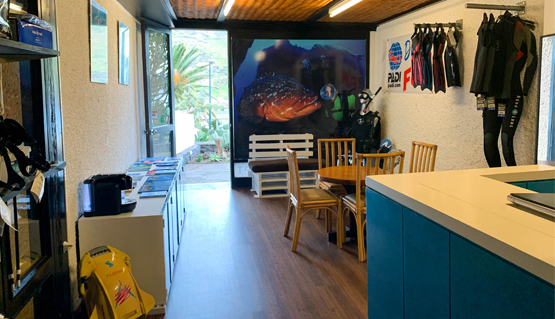

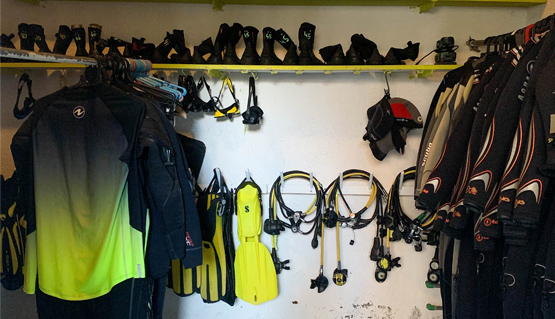


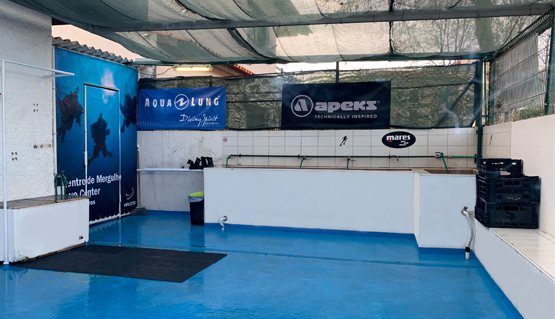
Know the characteristics.


Know our roots.
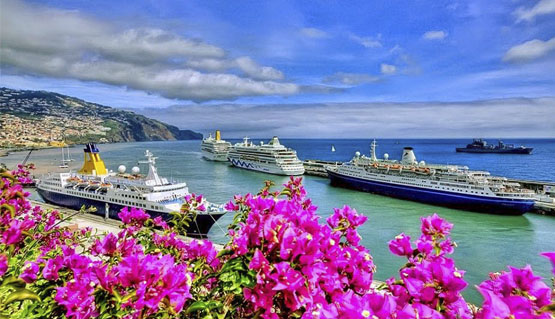
Madeira island is the main island in the Madeira Archipelago, located southwest from Portuguese coast, in the Atlantic Ocean, and constitutes together with Porto Santo, Ilhas Desertas (Deserted Islands) and Ilhas Selvagens (Wild Islands) the Madeira Archipelago, with the city of Funchal as capital.
Madeira has volcanic origins, with a subtropical weather, being able to find tropic elements in the south coast and tempered weather elements in the north coast. So, annual average temperatures reach, in the south coast, 20ºC and more. Water temperature, one of the most appreciate island’s attribute, vary between 26ºC and 19ºC in winter.
Diving in Madeira has gained increasing importance with those ones who visit the island and wish to see the settled species of these seas, like dolphins, rays, stingrays and even monk seals, one of the most unusual seal in the world that can reach 3 meters long and 400 kg.
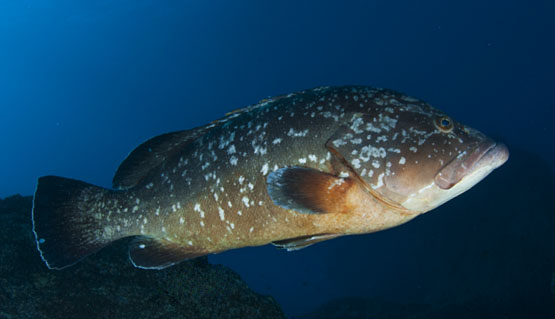
Meet the members of our team, who work daily to provide the best underwater experiences.
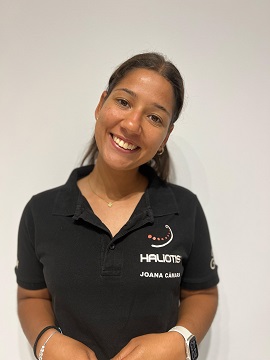
Joana Câmara
Base Leader joana.camara@haliotis.pt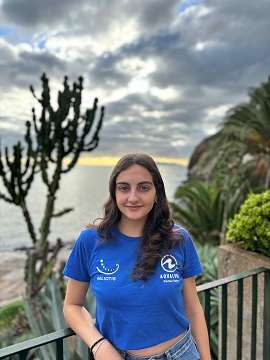
Rita Gonçalves
Divemaster Leader rita.goncalves@haliotis.pt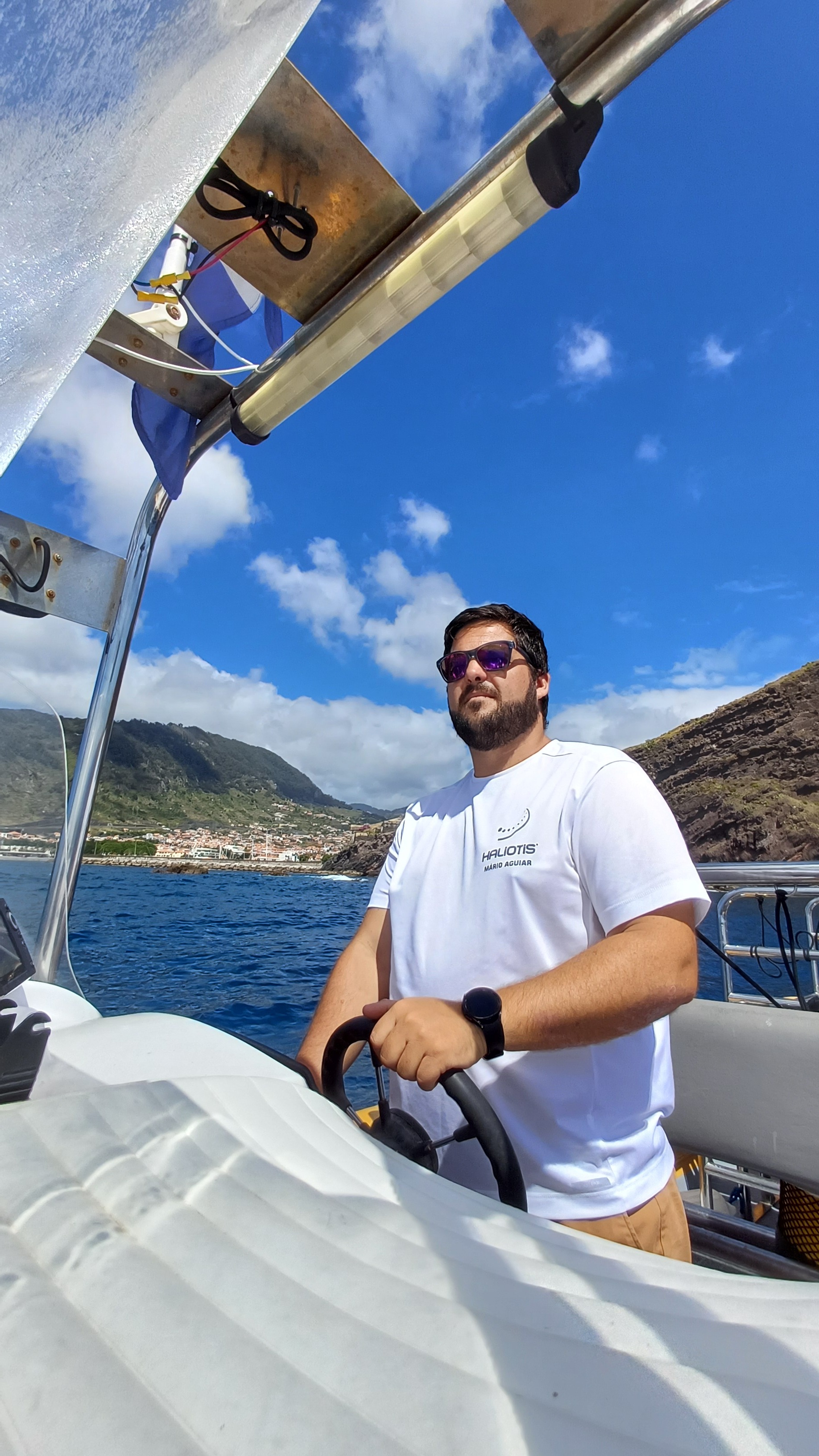
Mário Aguiar
Diving Instructor mario.aguiar@haliotis.pt
Telm. +351 936 472 193
e-mail: madeira@haliotis.pt
INSTITUTO PORTUGUÊS DO DESPORTO E JUVENTUDE, I.P
Alvará de Animação Turistica 9/2009
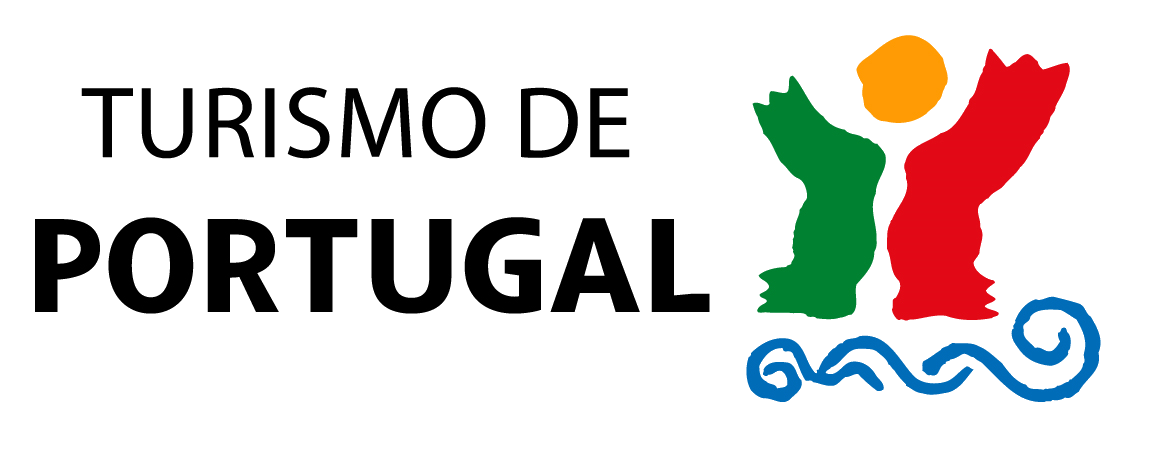
Institudo das Florestas e Conservação de Natureza IP-RAM

Secretaria Regional de Economia, Turismo e Cultura

Operador Maritimo Turistico com a Licença Nº17
Capitania do Porto de Peniche
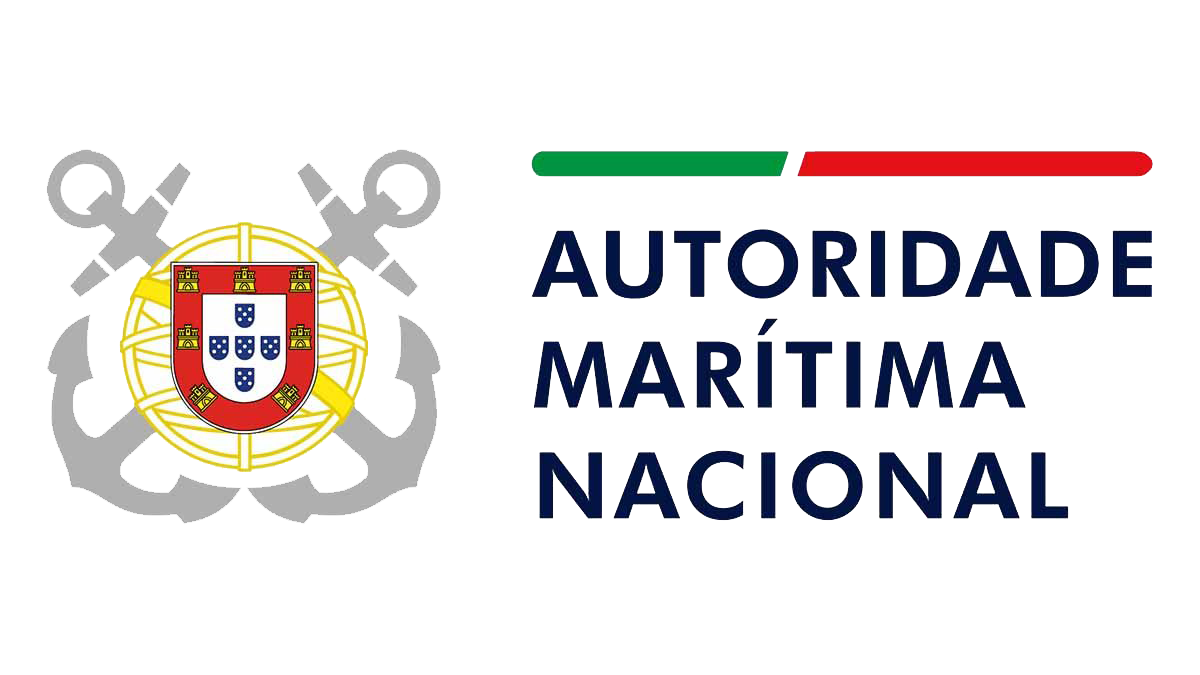
Todos os seguros obrigatórios por Lei pela Mútua dos Pescadores

